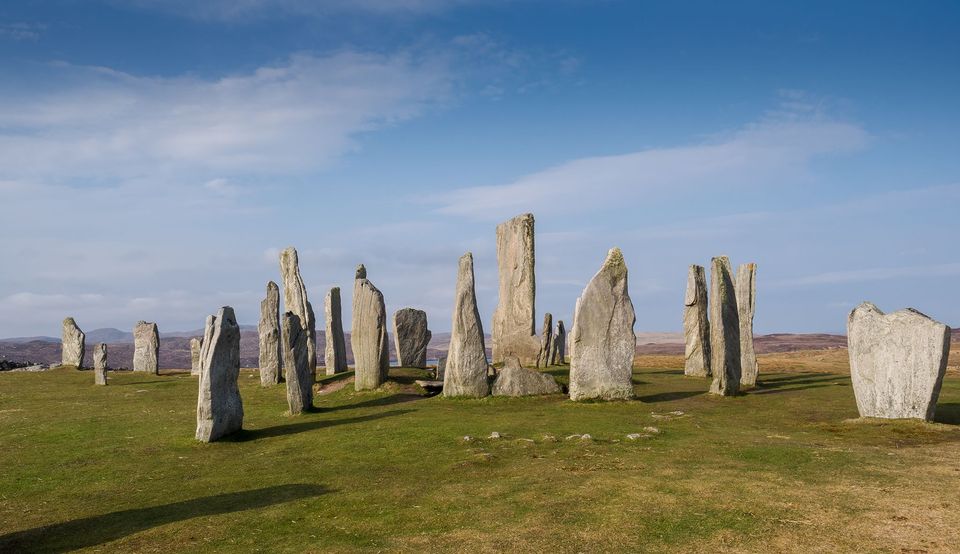Exploring Britain’s secret heritage

The Network of Ley Hunters is an informal movement for all who are interested in leys and patterns within the landscape.
Leys are alignments of sacred sites, often converging on a holy hill and linked to the sun or moon, e.g. aligned with sunrise at the summer solstice. Our prehistoric ancestors recognised these lines of sight and marked them with our most ancient monuments, including standing stones and burial chambers. Also known as spirit paths, leys can be dowsed and must be of divine or mystical significance, leading to the conclusion that the earth is a living landscape connected to heavenly bodies. Does Father Sky fertilise Mother Earth at certain places and at special times and do the leys spread this fertility throughout the land?
Leys are obviously associated with death but also with the needs of the living who use them to travel. The term ley (never ley-line!) was used by Alfred Watkins in his seminal book The Old Straight Track (1925). Stones marked the way and were, perhaps, dedicated to Mercury and assisted merchants to reach their markets. Mercury could be equated with Hermes, Thoth and Toutates.
Whilst leys are straight, dowsers such as Hamish Miller and Paul Broadhurst (The Sun and the Serpent , 1989) found male and female earth currents coiling around them. Other patterns in the landscape are terrestrial zodiacs, such as The Glastonbury Zodiac, described by Mary Caine in her book of that title in 1978. Other notable authors to research are Paul Devereux and John Michell.
Leys are an important feature of the living sacred landscape. Knowledge of leys enables us to work better with the spirit of the land for mutual benefit. This can include walking pilgrimages, even singing. Dreaming at sacred sites can be rewarding. Join us on our Vision Quests on Carn Ingli by telephoning Laurence Main on 01650 531354
Modern archaeoastronomers recognise alignments which are leys but fail to acknowledge this fact, thus following in the footsteps of the editor of Antiquity who notoriously refused a paid advertisement for Alfred Watkins’ book in the 1920s. Perhaps they are afraid of the spiritual side of leys.
Our newsletter is available on annual subscription of £15 (or £20 if abroad). This brings you four quarterly issues. Please send your name and postal address (CLEARLY PRINTED) together with a cheque or postal order payable to the Network of Ley Hunters to Laurence Main, Network of Ley Hunters, 9 Mawddwy Cottages, Minllyn, Dinas Mawddwy, Machynlleth, SY20 9LW, Wales, United Kingdom.